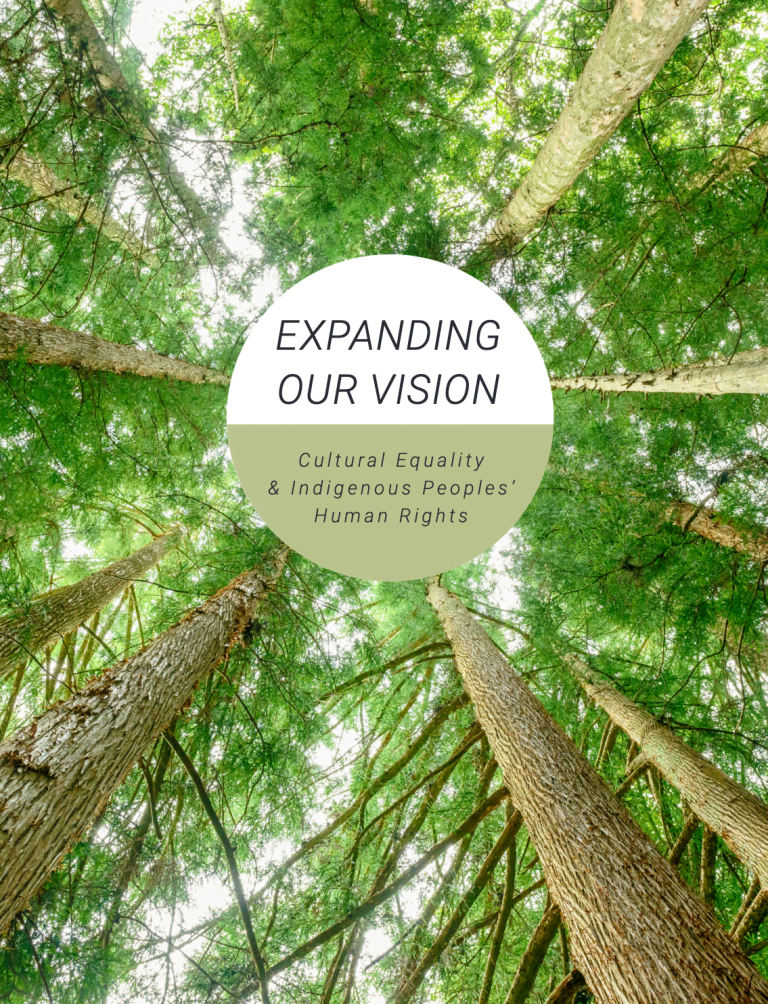44 search results
for
Decolonization and Indigenous rights
Guiding recommendations
Recommendation 1: Broaden the concept of human rights to incorporate international human rights principles as reflected in the United Nations Declaration on the Rights of Indigenous Peoples (UNDRIP) and Indigenous legal traditions, in the Code and BCHRT operations and practice.-
Category and theme:
Groups affected:
Location of recommendation:
Guiding recommendations
Recommendation 2: Advocate to add Indigenous identity as a protected ground to the Code. Current grounds of discrimination under the Code (including based on race, colour, ancestry or religion) do not adequately address the discrimination Indigenous Peoples report experiencing. This would send a message of inclusion and reflect the individual and collective nature of Indigenous human rights.-
Category and theme:
Groups affected:
Location of recommendation:
Guiding recommendations
Recommendation 3: Increase the number of Indigenous Peoples at all levels of the BCHRT, including staff, tribunal members and contractors.-
Category and theme:
Audience:
Groups affected:
Location of recommendation:
Guiding recommendations
Recommendation 4: Create education materials and training:- For Indigenous Peoples, about the Code and BCHRT processes;
- Within the BCHRT, to develop cultural competency and safety among BCHRT staff and tribunal members;
- For the general public, through a proactive campaign to highlight specific areas of discrimination faced by Indigenous Peoples.
-
Category and theme:
Audience:
Groups affected:
Location of recommendation:
Guiding recommendations
Recommendation 6: Increase the training for and number of lawyers available to support Indigenous Peoples in bringing human rights complaints, with an emphasis on Indigenous lawyers.-
Category and theme:
Audience:
Groups affected:
Location of recommendation:
Immediate procedural steps
Recommendation 7: Consider these recommendations remedial measures, and implement active and concerted efforts to address the underrepresentation of Indigenous complainants accessing the BCHRT. Create an affirmative access program for Indigenous Peoples.-
Category and theme:
Audience:
Groups affected:
Location of recommendation:
Immediate procedural steps
Recommendation 8: Create a staff/tribunal committee tasked with developing the Expanding Our Vision Implementation Plan. Indigenous lawyers and cultural leaders or academics with knowledge of human rights should be recruited to join these efforts. The Expanding Our Vision Implementation Plan should include immediate steps to be taken in the first 6 months, and then be renewed on a yearly basis.-
Category and theme:
Groups affected:
Location of recommendation:
Incorporate Indigenous laws
Recommendation 10: The BCHRT should actively engage with Indigenous Peoples, working with the Office of the Human Rights Commissioner, Indigenous lawyers, and law schools, to incorporate Indigenous laws into a renewed human rights process which reflects Indigenous approaches for protecting human rights.-
Category and theme:
Audience:
Groups affected:
Location of recommendation:
Incorporate Indigenous laws
Recommendation 11: The BCHRT, working in concert with the Canadian Human Rights Tribunal, could approach other human rights agencies to institute an Indigenous ombuds office across jurisdictions, per the recommendation of the MMIWG2S Inquiry.-
Category and theme:
- Access to justice ,
- Decolonization and Indigenous rights ,
- Health, wellness and services ,
- Human rights system ,
- Indigenous issues in policing and justice ,
- Missing and murdered Indigenous women, girls, Two-Spirit, and LGBTQ2SIA+ people ,
- Policing and the criminal justice system ,
- Poverty and economic inequality ,
- Public services
Audience:
Groups affected:
Location of recommendation:
Increase Indigenous involvement within the BCHRT
Recommendation 12: Priority should be given to hiring or appointing Indigenous staff and tribunal members.-
Category and theme:
Audience:
Groups affected:
Location of recommendation:
